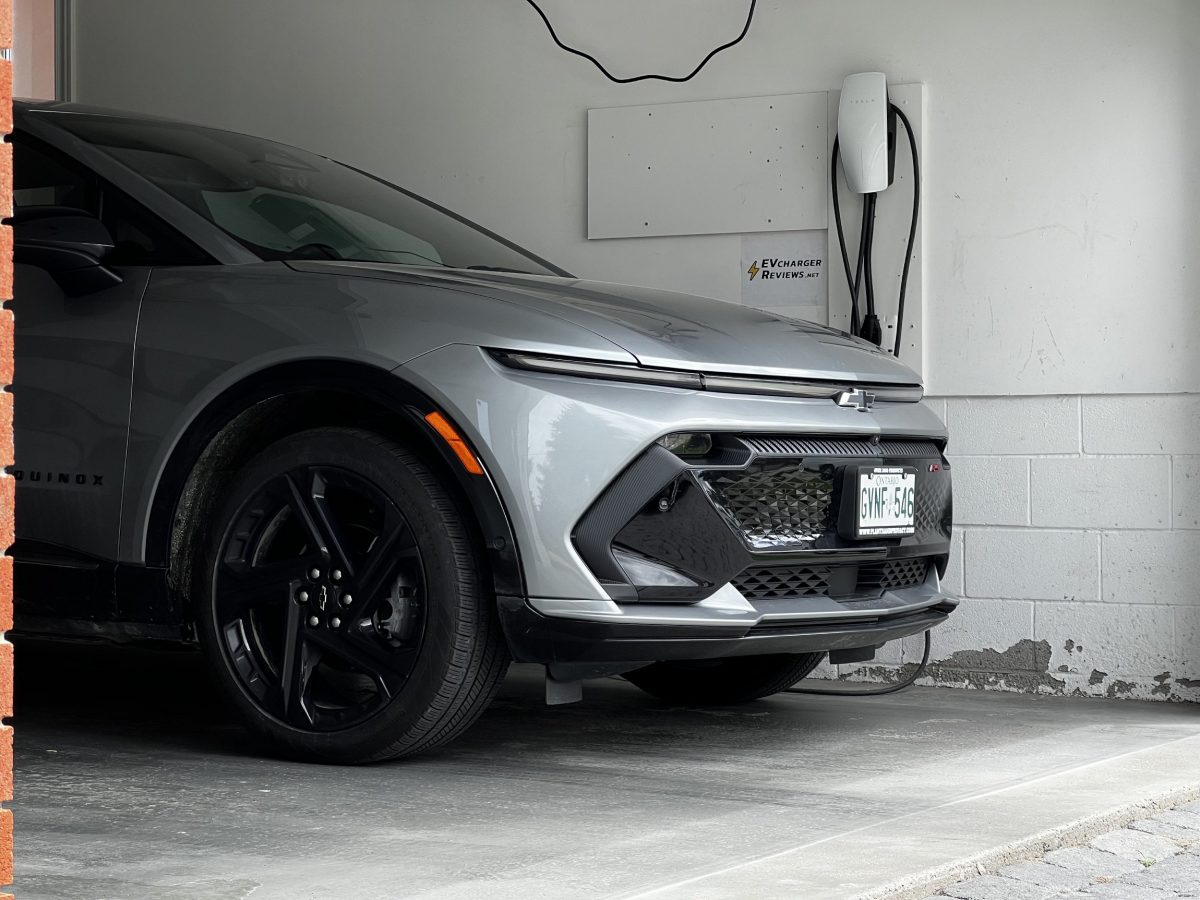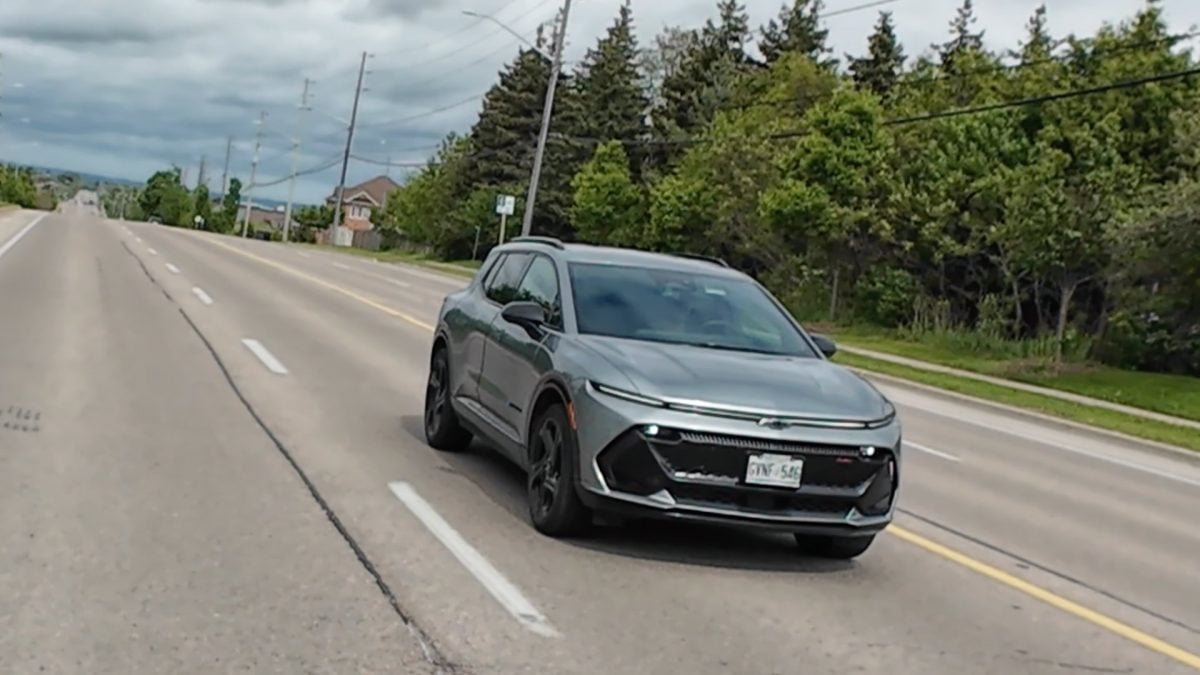I’ve never really been excited about the previous generations of the Equinox nameplate, but the current Equinox EV is one of the best electric SUVs on the market right now. It delivers a lot of capability for the money, it’s the right size, it goes far, and it looks good. Chevy had just surpassed Ford in the US for the second fastest growing EV manufacturer, and you can bet the Equinox EV is helping push those numbers. The Equinox EV will convert many GM loyalists from ICE to EV, but I also think it’s got a good chance at conquesting more than a few EV shoppers over to Chevrolet.
Battery and Charging
In terms of kWh per dollar, nothing beats the Equinox EV. All trims now come with the 85 kWh battery, which is the right size for this vehicle. Chevy sells this car as the most affordable EV with over 300mi/500km of (rated) driving range. And, I think it’s possible to achieve driving around town. And you can get this large-ish battery and range for a compelling price, the LT trims can be had for mid-$30s in the US and high-$40 thousand dollar mark in Canada. Local incentives may also apply.
In a road trip scenario after your deplete your initial range, the Equinox EV puts on an impressive charging performance, with some caveats. This SUV can precondition the battery for fast charging automatically (or manually), and then hit peak DC charging speeds of 150 kW. While that 150 kW may not be class leading, it will hold near-peak speeds fairly deep into the charging session, so a lot of energy can be replenished in the first 15-25 minutes. In my experiment video above, you can see that 34 kWh was delivered from the charging station in 15 minutes, which allowed me to drive 140 km at 120 km/h. Based on this efficiency, I estimate it will go 357 km at 120 km/h from full to zero, and very likely over 400 km if you opt for smaller 19-inch wheels and cruise a few km/h slower.
You can also see that I charging using a Tesla Supercharger station, because yes, 2024-2025 models will work with a NACS-to-CCS1 adapter, while 2026 MY cars will even come with a NACS inlet from the factory.
If there is one criticism about charging performance, I have to mention the pack voltage. Most EVs have a battery with voltage somewhere near 400 volts. But with the way GM designed their modular battery architecture, the 85 kWh pack in the Equinox has 10 battery modules that add up to a nominal voltage of 288 volts. Larger packs in other’s GM vehicles simply contain more modules wired in series, therefore increasing their total voltage closer to 400 volts or 800 volts. For example, the Hummer EV has 24 modules wired in series, totalling 796 volts.
The lower voltage pack in the Equinox EV is does not affect performance in most situations. It drives well, it certainly drives far, and it will happy recharge at home on Level 2 without issue at 11 kW. But you may experience slower than expected DC fast charging at some stations. For example; a normal 150 kW DC charging stations is designed to deliver 350 amps of current at ~400+ volts. Multiply amp x volts is how you arrive at charging speed in kiloWatts. But if your EV architecture is operating at a lower voltage, the same amps will mean lower power in kiloWatts. As a result, when I brought the Equinox EV to a 150 kW DC chargers, I watched it charge at around 100 kW. At a 50 kW DC charger, I observed about 35 kW going into the car.
In order to get the best DC charging performance out of this pack, we need to plug it into a 500 amp capable charging station. That is why the Equinox worked so well with the Tesla Supercharger in my testing, because Superchargers are capable of delivering well in excess of 500 amps. At CCS charging stations, the Equinox is likely to charger faster on on 350 kW dispensers than 150 kW ones, because of these amp limits. With a little careful planning, the Equinox is a very capable road tripping EV for coverable large distances.
Driving, Motors, Software, and EV Features
For 2025, you can get the LT and RS trims with either a 164kW/220hp FWD motor, or 224kW/300hp dual motor AWD setup. The single motor variant is what you want for best value and efficiency, it certainly has enough power city traffic and highway cruising. But it feels a little sluggish for highway overtaking. I’m a little bit spoiled from driving faster EVs in recent years, so if I was buying this SUV for myself I would likely spec it on the LT trim to keep costs down, but add the optional AWD for added performance. But the single front motor drivetrain will be plenty for most drivers.
I really admire the relaxed driving dynamics of the Equinox EV. Even on the large 21-inch wheels of the RS model I drove, the ride is quiet and soaks up potholes without much impact or noise. The suspension is really well sorted for highway cruising too. High speed surface transitions and undulations and handled without much secondary bounce, making long journeys enjoyable. Regardless of rim size you choose, the total wheel diameter is quite large for a compact SUV. The 275/45 section tires have a diameter of 30.7 total inches, giving the Equinox a smooth ride and good high speed stability.
I was also pleasantly surprised the with state of software in the Equinox EV, and GM in general. Most of the established car manufacturers know how to build hardware and cars but often lag behind start-ups in software. EVs especially, depend on good software for good user experience, charging, and trip planning. Chevy’s infotainment system is leaning heavily on Google/Android software for those features, and this implementation the the Equinox is fantastic.
The UI and screens are smooth to respond and snappy, features are easy to find, and Google Maps is used for navigation and trip planning. It does a fantastic job informing the driver how much battery percentage will remain on arrival, as well as find charging options when travelling long distance. If there is one piece missing in the software stack, I’d love to see an option de-rate AC home charging to lower amps. I could not find a way to do this in the Equinox for Level 2 home charging. However, the system support over the air updates, and GM already released several updates to the car since it was launched. It’s possible more features will be added over time.
Verdict
There is a very good reason why Chevy’s EVs are selling well these days. Their modular Ultium battery architecture allows for scaling and competitive pricing. Their EV software implementation is miles ahead of the competition from other established car makers, and their cars just look good these days on the road with their current brand identify. The Equinox EV benefits from all these individual parts and comes together as a very compelling and cost competitive electric SUV. It has plenty of space, drives well, goes far. As a charging enthusiast, I wish it DC charged even faster. But this is a fantastic first iteration of an all electric Equinox. Go drive one, you won’t be disappointed.



